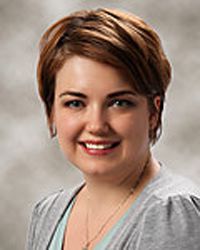Practitioners Build Award Winning Outpatient Palliative Care Program
Kaufman Cancer Center created an outpatient palliative care program by using resources that were already available inhouse. The Center has been awarded the 2016 ACCC Innovator Award from the Association of Community Cancer Centers for this initiative.
Michelle Abramowski, MSN, CRNP

Michelle Abramowski, MSN, CRNP
Palliative care is an essential part of oncology treatment, particularly for patients with stage IV cancers, multiple comorbidities, or whose cancer progresses despite treatment. Research has shown that early intervention with palliative care leads to a better quality of life and a smoother process of care for patients.
With this in mind, the Kaufman Cancer Center at the University of Maryland Upper Chesapeake Health Center launched an initiative to create its own outpatient palliative care program, hoping to better identify their high-risk patients and provide additional support to them.
Using resources already available in-house, the Kaufman Cancer Center was able to grow this program from the inside out. The initiative was so successful that the center has been awarded the 2016 ACCC Innovator Award from the Association of Community Cancer Centers and will be recognized at the ACCC’s 33rd National Oncology Conference to be held in St. Louis, Missouri, October 19-21.
In an interview with Oncology Nursing News, Patsy Astarita, LCSW-C, OSW-C, manager, Supportive Care & Community Services at the center, explained how their program works:
“It’s shifting the existing work. If we can put a little bit more effort in on the front-end, and identify these patients upfront, before things get to crisis mode, it might make things more manageable for us.” Thus, the outpatient palliative care program moved away from reactive treatment and became more proactive.
Importantly, the outpatient palliative care program they created was multidisciplinary—involving oncologists, nurse practitioners, social workers, dieticians, and pharmacists.
To create the program, the center identified existing challenges (such as communication, education, and a lack of budget) and existing strengths (a passion for palliative care, a culture of sensitive change, and an inpatient palliative care program). A workgroup met to review the literature and evaluate existing models. From there, the program established 3 elements important to their goals: weekly palliative care conferences, earlier “Goals of Care” meetings, and a core group of key clinical team members to become palliative care experts who also meet on a regular basis.
The weekly conferences were used to discuss symptom management and identify those in need of earlier palliative intervention. These meetings are multidisciplinary as well, which, according to Michelle Abramowski, MSN, CRNP, a nurse practitioner at the center, “really allows us to sit down and tease out these different pieces of what’s going on with the patient.”
These sessions also mean that patients are less likely to slip through the cracks, since a practitioner at any level can identify those patients. “Anyone can bring a patient to the conference,” Astarita explained. “Everybody has the ability to and should feel empowered to do that.” In addition to referral from all healthcare providers, Astarita hopes to implement an automatic referral process that will “bring certain patients who are at high risk to the attention of the team.”
From there, the team moves forward with goals of care meetings. These meetings aren’t just about treatment, however.
“The critical piece,” Astarita stated, “is setting the stage. Making sure you have the right family members present and the right treatment team members on board,” so the focus is on what’s important to the patient, and what they want. “That’s important for us to understand. Tell us about you, what’s important to you? What’s important to you right now in your life?”
“It’s really sitting down with the patient and whomever the patient would like to be involved, to review what is the current clinical status, what are the patient’s values, what are the patient wishes, how are things going prognostically, how is the patient looking, how is the patient’s understanding of what’s going on,” Abramowski added. The series of meetings are used to develop a relationship, with the patient and the patient’s family.
“It’s all about relationship building. Conversation after conversation, meeting after meeting.”
The palliative care expert group exists to function as “a resource for team members within the cancer center,” Abramowski explained. The group meets bimonthly, to share knowledge, develop new skills, and monitor overall progress of the program. Astarita hopes that the “coaching and mentorship going on with these palliative care experts and other team members” will expand in the future.
Success of this program is seen in fewer emergency department visits and ICU admissions, earlier admission to hospice, a reduction of end-of-life chemotherapy, earlier and more frequent “goals of care” meetings and overall improved communication between patients, families, and the treatment team. Astarita and Abramowski hope to analyze and understand their outcome data on a deeper level in the months to come.
For others looking to create an outpatient palliative care program from the inside out, Astarita said that the most important thing is to do an “assessment of your strengths, an assessment of motivation of your team, what does your team value, and then what does your patient population need most.”
Abramowski added that “support from leadership” was also important. About their own program, Astarita emphasized, “It’s a work in progress, we continue to learn.” She said the main message would be, “Any program that you put in place is a growing breathing entity, a living thing that is going to change based on your patient population, the clinical services you have to offer, and what’s happening in healthcare.”
References
Astarita, P. UMD Upper Chesapeake Health, Kaufman Cancer Center: Building a Palliative Care Program [youtube video]. ACCCVision; 2016.



